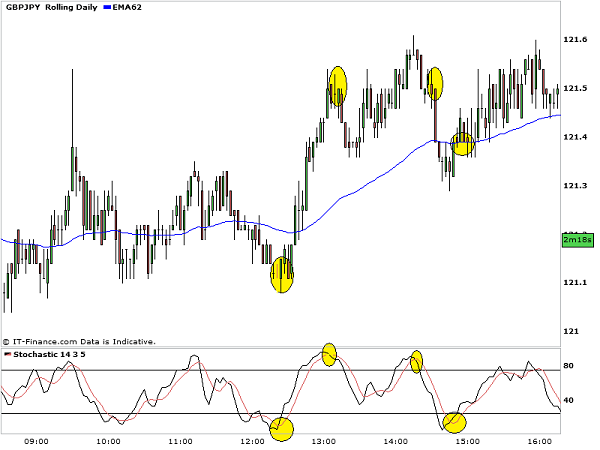Scalping requires an ability to move in and out of the forex market quickly, taking short, small gains whilst limiting risk and exposure. Scalpers vary in style and can trade multiple times throughout the day or simply once dependent on the strategy and leverage that they apply to their trades. The fact that scalpers often take only a handful of pips means that they often trade larger value transactions rather than swing traders who may trade on a lower margin but for a higher gain in pips.
For these reasons, scalpers need to be highly accurate and have incredibly clear rules and strategies to determine entry and exit. Reducing the time that they have to think about a live trade and trading mechanically with their system is often the way many successful scalpers continuously make money trading forex. The reliability of the indicators being used is paramount to success of an indicator-based strategy. Finding the right indicator for a particular scalping strategy is essential especially when the signals need to be both fast and accurate.
It is a well-known fact that many indicators can be considered ‘lagging indicators’. Moving averages, [intlink id=”1914″ type=”post”]MACD[/intlink] and other momentum indicators are excellent for swing traders to become involved with crossover strategies and trades in which the bigger price move over a period of time is the aim of the trade. These indicators will give delayed signals but the benefits are that they have a higher accuracy in pointing to longer term trends. For scalping strategies, however, the necessity is to become involved and exit as fast as possible once the profit target has been reached. These strategies often look for the beginnings of price movement when momentum is high and opportunities to gain pips with lower downside risk are increased. Lagging indicators, such as moving averages, may help as a general overview of the market sentiment as a whole but will not be particularly helpful in defining entries and exits for a scalper.
The opposite of the lagging indicator are the ‘leading indicators’. These provide a pre-emptive indication that a market may change direction and are therefore far more useful for scalping strategies. [intlink id=”1978″ type=”post”]Oscillators[/intlink] are the most well-known of the leading indicators. Stochastic and [intlink id=”1893″ type=”post”]Relative Strength Index[/intlink] oscillators are particularly popular amongst scalpers. As reversal indicators they give a clear suggestion as to which side of the trade a scalper should be on.
Although they are calculated differently, oscillators define when a currency is potentially over–bought or over-sold. When price hits either of these extremes scalpers can look to trade with the signal and look for reversal signals, perhaps in the form of chart patterns or candlestick analysis to reaffirm their entry. These oscillators are highly accurate, with the benefit of hindsight; however, they often have a tendency to spend some time in their extreme areas before reversing. To mitigate this many scalpers look for crossovers at the extremes in order to establish whether the reversal is going to be sooner, rather than later.

Comments (No)